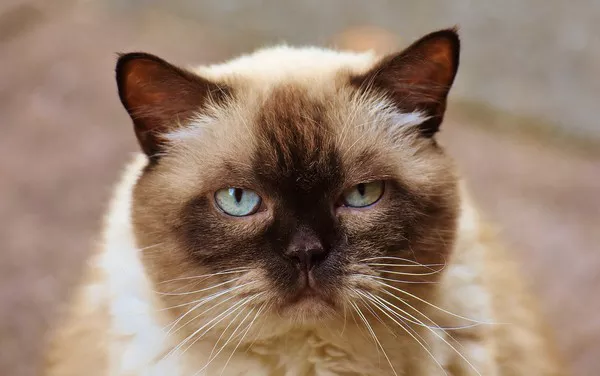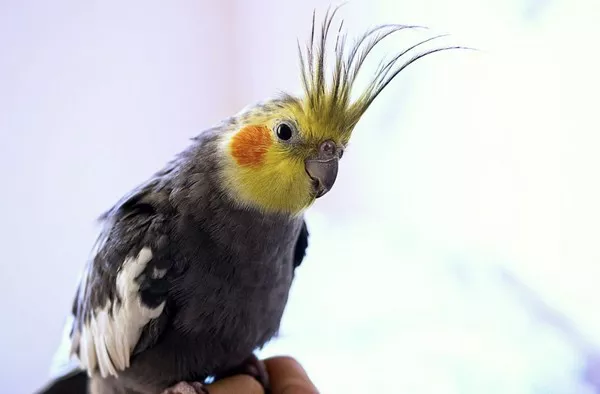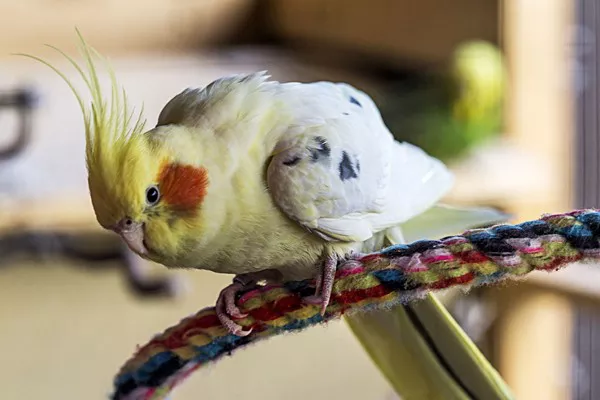Tortoiseshell cats are a beautiful and intriguing breed with their unique, multi-colored fur patterns. Their distinctive coats come in a combination of black, orange, and cream colors, and sometimes with a bit of white mixed in. The coat pattern is widely adored, and many cat owners are fascinated by it. But here’s a curious fact: most tortoiseshell cats are female. While it might seem like a random coincidence, there’s actually a scientific explanation for this phenomenon. In this article, we will explore the genetics behind the tortoiseshell pattern and why it’s so common in female cats.
What Is a Tortoiseshell Cat?
Before we dive into the scientific explanation, let’s define what a tortoiseshell cat is. The term “tortoiseshell” refers not to a specific breed of cat but to a particular coat pattern. Tortoiseshell cats are characterized by a mixture of black, orange, and cream-colored fur. These colors are typically seen in patches that are unevenly distributed, which gives the coat its signature marbled or speckled appearance. Some tortoiseshell cats may also have white fur mixed in with the darker and lighter shades.
This coat pattern is not exclusive to any one breed of cat. Cats of any breed or mixed breed can have a tortoiseshell coat. However, the tortoiseshell pattern is usually associated with domestic cats, though some wild cats, such as the ocelot, may also exhibit similar coloring.
The Genetics of Cat Coat Colors
To understand why tortoiseshell cats are usually female, we need to take a closer look at the genetics behind cat coat colors. The color of a cat’s fur is determined by various genes, and the distribution of colors across the cat’s coat is influenced by these genes. In cats, coat color is primarily governed by a few key genes that are located on the X chromosome.
The X Chromosome and Color Inheritance
Cats, like humans, have two sex chromosomes: X and Y. Males have one X and one Y chromosome (XY), while females have two X chromosomes (XX). The key to understanding tortoiseshell cats lies in the X chromosome, as this is where the genes for the orange and black coat colors are located.
- The orange color in a cat’s coat is determined by a gene located on the X chromosome. The gene responsible for the orange coat color is called the O (orange) allele.
- The black color is also determined by a gene located on the X chromosome, known as the B (black) allele.
Each cat inherits one X chromosome from each parent. In females (XX), both X chromosomes are present, while males only have one X chromosome. For a cat to have a tortoiseshell coat pattern, she must inherit both the orange and the black color genes, one from each X chromosome. This means that for a female cat to display the tortoiseshell pattern, she needs to have two different color genes—one for black and one for orange—on her two X chromosomes.
Why Are Tortoiseshell Cats Mostly Female?
Now that we understand the role of the X chromosome in determining coat color, we can explain why tortoiseshell cats are predominantly female.
Since males only have one X chromosome, they can only inherit one of the two coat color genes. If a male cat inherits the O allele (orange), he will be orange, and if he inherits the B allele (black), he will be black. There is no way for a male cat to inherit both the black and orange color genes on separate X chromosomes, because he only has one X chromosome in total.
On the other hand, females have two X chromosomes. This means that they can inherit one color gene on each of their X chromosomes. If a female cat inherits the O allele (orange) on one X chromosome and the B allele (black) on the other, she will have a tortoiseshell coat pattern, with patches of both black and orange fur.
Thus, for a cat to be tortoiseshell, it needs two different coat color genes, and this is only possible in females. Male cats, with only one X chromosome, cannot have this dual inheritance of coat color genes and, therefore, cannot naturally display the tortoiseshell pattern.
The Exception: Male Tortoiseshell Cats
While it’s exceedingly rare, there are male tortoiseshell cats. These cats have an extra X chromosome, which allows them to inherit both the orange and black color genes. This condition is known as Klinefelter syndrome and occurs in male cats when they inherit two X chromosomes and one Y chromosome (XXY). The presence of this extra X chromosome allows male cats to have both the O and B alleles, resulting in the tortoiseshell coat pattern.
However, male tortoiseshell cats with Klinefelter syndrome are very uncommon and may experience some health problems as a result of the extra chromosome. Many of these cats are sterile, meaning they cannot reproduce, and they may also have other genetic abnormalities. The chances of a male cat being tortoiseshell are so low that they are considered an anomaly rather than a typical occurrence.
The Role of the White Spotting Gene
In some tortoiseshell cats, there is also a third color present: white. The white fur is usually the result of a gene known as the white spotting gene, which causes patches of white fur to appear on the cat’s coat. The white spotting gene is not linked to the X chromosome but can interact with the orange and black color genes to create a more varied and striking coat pattern.
White spotting can appear as small patches of white fur on the cat’s paws, chest, belly, or face. In some cases, the white spots are minimal, while in other cats, they may cover a significant portion of the cat’s body. The presence of the white spotting gene doesn’t change the fact that tortoiseshell cats are predominantly female, but it does add another layer of complexity to the coat pattern.
Tortoiseshell and Calico Cats: What’s the Difference?
Tortoiseshell cats and calico cats are often confused because their coat patterns are similar, but there is a key difference between the two.
Tortoiseshell cats have a mix of black, orange, and sometimes cream-colored fur, but the colors are blended together in a marbled or speckled pattern.
Calico cats also have black, orange, and white fur, but the colors are more distinct and appear in larger patches rather than being mixed together.
Like tortoiseshell cats, most calico cats are also female for the same reason: they need to inherit both the orange and black color genes from their two X chromosomes. The main difference is the addition of white fur in the calico pattern. The white fur is typically due to the white spotting gene, as discussed earlier.
While calico cats and tortoiseshell cats are often compared, it’s important to note that a cat cannot be both a tortoiseshell and a calico at the same time. However, many people use the terms interchangeably or refer to a tortoiseshell cat with white fur as a “calico-tortoiseshell” or “tortie-and-white.”
The Emotional and Behavioral Traits of Tortoiseshell Cats
Beyond their striking appearance, tortoiseshell cats are often described as having unique personalities. While the behavior of any cat is shaped by a combination of genetics, environment, and individual experiences, many people believe that tortoiseshell cats tend to be more independent, energetic, and even feisty compared to other cats. Some believe that tortoiseshell cats are more “sassy” or “spicy” in their demeanor, with a bit of an attitude.
It’s important to note that these personality traits are not universally true for all tortoiseshell cats. Just like with any other cat, a tortoiseshell cat’s temperament can vary based on factors such as breed, upbringing, and socialization. However, many tortoiseshell cat owners have reported that their cats are more headstrong or assertive, which has led to the popular association of the tortoiseshell temperament.
Conclusion
In summary, the reason why tortoiseshell cats are predominantly female lies in the genetics of coat color inheritance. The genes for black and orange fur are located on the X chromosome, and females, with two X chromosomes, can inherit both the black and orange genes, resulting in the tortoiseshell coat pattern. Male cats, on the other hand, have only one X chromosome and therefore cannot inherit both coat color genes, making tortoiseshell males extremely rare.
While the vast majority of tortoiseshell cats are female, a male tortoiseshell cat can occur in the rare case of Klinefelter syndrome, where a male cat has two X chromosomes and one Y chromosome (XXY). These male cats may face some health challenges, and their tortoiseshell pattern is an anomaly.
The distinctive tortoiseshell coat and the mystery behind its genetics have made these cats beloved by many cat enthusiasts. Whether they are showcasing their bold and spirited personalities or simply delighting their owners with their colorful coats, tortoiseshell cats remain a symbol of beauty and intrigue in the world of pets.
Related Topics:























